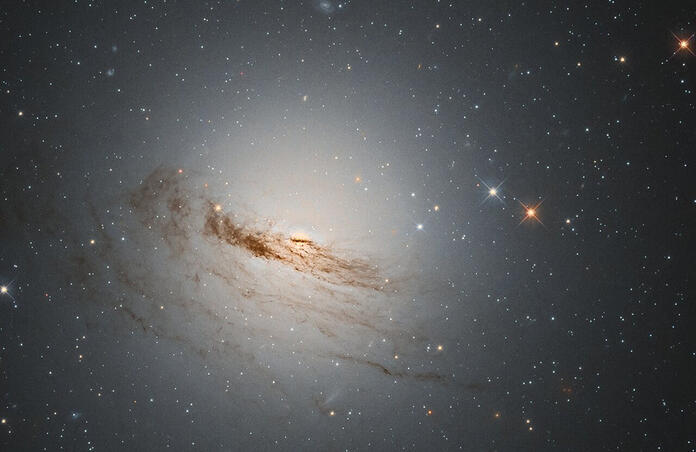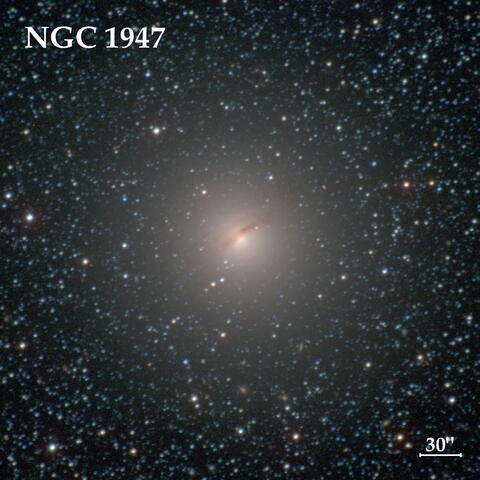NASA's Hubble telescope reveals detailed look at a dying galaxy

NASA has released a Hubble Space Telescope image titled “Threads of NGC 1947”, showing a galaxy with an usual formation history.
NGC 1947 is located more than 45 million light-years away from us, in the Southern constellation of Dorado. It is part of a group of three with a spiral and a barred spiral galaxy. NGC 1947 is a lenticular one, a type where the galaxies have shapes between those of elliptical galaxies and spiral galaxies: they don’t show the typical spiral arms but are flatter than “egg-shaped” elliptical ones. M84, the galaxy in which the first image of a black hole was taken, is actually also a lenticular galaxy! Added to that, this galaxy shows weak ionization emission lines (“low-ionization nuclear emission-line region” or LINER), processes which are thought to originate from an Active Galactic Nucleus. Yet this galaxy isn’t very active overall; it has a very low star-formation rate. The wisps of gas that are beautifully visible on this Hubble image likely were once its spiral arms. The dust-lane in front of the galactic center is also noticeable. The galaxy’s old stellar population rotates along the major axis, while there is gas and dust rotating along the minor axis.

All this indicates that NGC 1947 is a galaxy on decline. You might remember from the Academy Article How old is a galaxy? that galaxy evolution is a complicated question. In this case, the motion of the gas and dust, different to that of stars, is thought to come from a past encounter with another galaxy. Rather than through a typical merger event, NGC 1947 may have accreted gas and dust from a “donor” galaxy. However, it is not going to hit upon another galaxy soon, so it won’t obtain new gas and dust. Although supernovae events do provide material for the Interstellar Medium, from which stars can form, galaxies effectively loose 70% of their initial gas and dust in the remnants – neutron stars, white dwarves, but also in the planets formed within stellar systems. NGC 1947 is one of those galaxies running out of star-fuel, slowly fading away as stars “switch off” one after the other.
What makes it even more difficult for galaxies to increase their gas content is that about 2/3 of the gas produced shortly after the Big Bang is located in the Intergalactic Medium – but since space is expanding due to the effects of Dark Energy, galaxies are starting to lose their gravitational attraction power over this matter. If this expansion keeps going, stars won’t be able to form anymore and the Universe itself will fade. Make the most out of it while its galaxies are still bright enough for telescopes! You might be able to get a glimpse at NGC 1947 with CHI-3.
Cover Image: NGC 1947, ESA/Hubble & NASA, D. Rosario; Acknowledgment: L. Shatz
Image Credit:
1 - NGC 1947, Carnegie-Irvine Galaxy Survey
